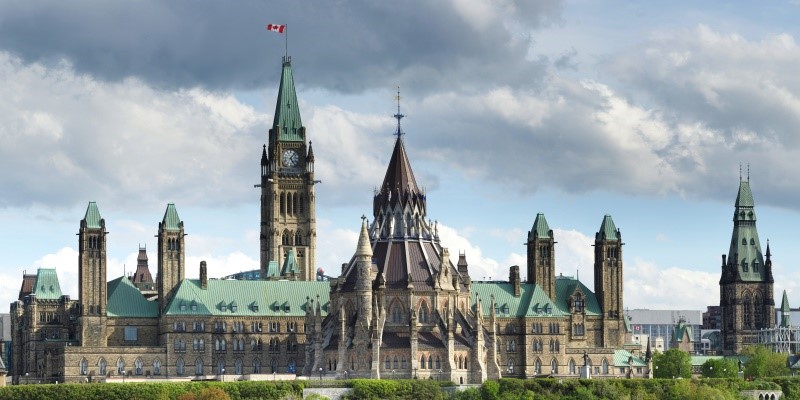Our eighth-best carbon policies

Economists talk about “first-best” policies, by which—we’re a little illiterate—we actually mean “best” policies. With less offence to the language, we go on to “second-best” policies, “third-best” policies and so on, for as many numbers as are appropriate given how far the departures real-world policies make from what economists would regard as ideal. Given the departures Canadian carbon policies make, you’ve got to figure we’re now about eighth-best.
The platonic ideal of “first-best” is when competitive markets produce private goods, by which in our secret language we economists mean goods whose benefits and costs are exclusive to the people who produce and consume them. In such cases, markets produce just the “right” amount of such goods, namely, the amount where the marginal cost of providing the good is equal to the marginal benefit it produces, with all benefits and costs taken into account. Anything else constitutes what we call a “market failure” and may need public policy to remedy it, assuming the remedy isn’t undone by “government failure,” which you’ve got to think, seeing how real-world governments operate, happens quite a bit.
First-best for carbon would occur if there weren’t any “external” costs or benefits associated with its production and consumption. But there probably are. A lot of atmospheric theory says rising levels of different gases in the atmosphere can affect the climate. Unfortunately, exactly how much and at exactly what cost is very hard to say with anything even approaching exactness.
Writ large, the second-best result for this kind of problem is to arrange for some sort of charge on the use of a good that reflects the “external” costs its use imposes. There are vigorous debates among economists and others about whether the best way to do that is through a direct tax on use or through a licensing system, in which people using a certain amount of the good must acquire a license giving them that privilege, with the overall number of licenses being sufficiently limited so as to have scarcity value, so that a market for them generates a price greater than zero.
But that is all that second-best requires. Price the offending good at a value reflecting the damage it does and you are done. You don’t need policies to encourage other kinds of energy. You don’t need special policies for pipelines or other delivery systems. With carbon-intensive products priced in a way that reflects their full costs, markets are perfectly capable of deciding which sources of energy make the most sense for people’s and firms’ own individual purposes.
Now, however, in a significant departure from that approach, the federal government has layered its carbon tax on top of a wide range of existing supports for other forms of energy. And it has also just announced that any and all profits from the Trans Mountain pipeline expansion—which the federal government now owns—will go toward even more support for the development of clean energy.
That may be wise politically—politicians presumably have some expertise in politics—though are there really that many people whose view of a pipeline they don’t like will be changed by spending the profits it generates on purposes they do like?
In economic terms, however, it makes no sense. Ideally, a government should use any new revenues that come its way on whatever purposes bring the highest possible returns at the margin. Of the hundreds, maybe thousands of things the federal government could do with found money, including giving it back to taxpayers, it’s certainly possible that investments in clean energy will bring the very highest returns. But it does seem unlikely. In spite of that, from now on pipeline profits will go to clean energy whether or not the marginal return on such investments is high, low or even negative.
Of course, how pipeline profits get spent may be moot. With the federal government now in charge of construction, the chance of there being a profit seems remote.
Not that the Conservative carbon plans get any closer to first or second best. At their heart is a 40-kilotonne cap on emissions, beyond which large polluters will be required, to quote Conservative Leader Andrew Scheer’s announcement this week, “to invest in emissions-reduction technology specific to their industry.”
In effect, there’s no charge for carbon use below 40,000 tonnes but then on tonne number 40,001 there’s a very substantial charge in the form of a requirement to clean up. That’s inefficient in at least two ways. First, there’s no reason to suppose the cost of cleaning up the 40,001st tonne and beyond is the same across all firms. The efficient way to do the cleanup would be to start with the firms where it’s relatively easy and then move to firms where it’s relatively hard. Treating every firm with 40 kilotonnes the same simply ignores those differences.
Second, maybe cleanup would be really easy for some firms with significantly less than 40 kilotonnes of emissions. But under the Conservative plan they’re not going to be asked to do anything.
By contrast, under both the carbon tax and a cap-and-trade licensing system, all firms would have an incentive to clean up—for if they reduce their carbon use, they reduce either their carbon taxes or the number of emission permits they have to buy, thus saving themselves real money.
There are problems with carbon taxes and cap-and-trade systems, of course. Not least is knowing how high to make the tax or how many emission permits to issue. But universal comprehensive systems of that sort do at least expose everyone to the same estimate of the cost of the bad stuff, and that encourages an efficient response across all the economy’s margins.

